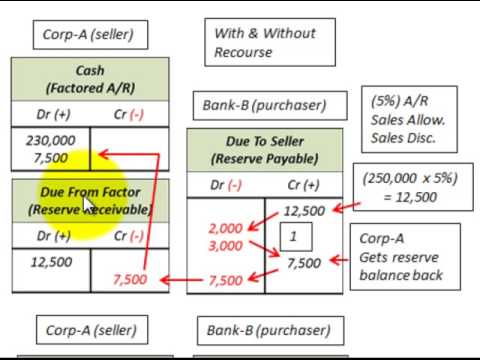Contents:


The correlation coefficient is a statistical concept which helps in establishing a relation between predicted and actual values obtained in a statistical experiment. The calculated value of the correlation coefficient explains the exactness between the predicted and actual values. In the financial and investment sectors, correlation is a measure that quantifies how closely two commodities move concerning one another. Advanced portfolio management employs correlations, calculated as the correlation coefficient, that must lie between -1.0 and +1.0. It is very easy for authors to compare a large number of variables using correlation and only present the ones that happen to be significant.
Phyllosphere microbiome induces host metabolic defence against … – Nature.com
Phyllosphere microbiome induces host metabolic defence against ….
Posted: Thu, 04 May 2023 15:32:49 GMT [source]
Chances are that if you find a optimistic correlation between two variables that the correlation will lie someplace between 0 and 1. Pearson coefficient is a kind of correlation coefficient that represents the relationship between two variables that are measured on the same interval. The correlation coefficient (normally denoted by “r” or “R”) can be decided by regression analysis. For example, if a portfolio and its benchmark have a correlation of 0.9, the R-squared worth could be zero.eighty one. The interpretation of this figure is that 81% of the variation in the portfolio is expounded to – or may be explained by – the variation of the benchmark .
How to determine the correlation coefficient?
In the beginning, this assumption of the cause does not seems that it could be proved as a correlation to the problem, but it is actually is. Doctors have to go with lots of assumptions on why a particular issue with the health as arises. The variables are related with respect to their causes & effects perspective. This is the straight forward and genuine conclusion that one may derive from a correlation. It measures the reliability of the data that are collected as groups. It measures the bivariate pairs of observations comparative to a “gold standard” measurement.
It is possible to find correlations between many variables, however the relationships can be due to other factors and have nothing to do with the two variables being considered. However, still use it in root cause analysis because it helps us to identify if there is a relation of impact between two variables. Additionally, the coefficient of correlation is a relatively easy-to-understand measure and can be used to illustrate both positive and negative correlation. When combined with visual tools like Scatter Diagram which are easy to create on popular spread sheet applications, the concept of correlation becomes even easier to understand.

The increase within the first variable will cause the decrease within the second variable. We’ll return to have a look at literature evaluation to possible explanations and rationales. A calculated number larger than 1.zero or less than -1.0 means that there was an error within the correlation measurement.
What do you mean by correlation coefficient?
Now with respect to the point thatcorrelation does not prove the cause & effect relationship between two variables, why do we still use in root cause analysis. Many a time the relationship that is indicated by a statistical correlation may have to be validated by other tools or trials before we establish the cause-effect relationship. Correlation does not prove the cause-effect relationship between two variables. 7) The coefficient of correlation is a pure number without the effect of any units on it. It also does not get affected when we add the same number to all the values of one variable. As we discussed, ‘r’ is not affected by any unit because ‘r’ is a scale-invariant.
To weed out bias, circular reasoning, self-fulfilling prophecies and hidden variables. Death of CEO is the cause for huge cab price/ revised cab price. Means the change in one variable does not change the other variable automatically. If we find “r” is None or very weak, then we can conclude Marketing budget does not affect the sales. Business to use these statistics for budgets and business plans. In today’s day and time, many projects are hard pressed for time and provided with limited funds.
The correlation coefficient is decided by dividing the covariance by the product of the two variables’ normal deviations. A adverse correlation describes the extent to which two variables transfer in reverse directions. For example, for 2 variables, X and Y, an increase in X is related to a lower in Y. A adverse correlation coefficient can also be referred to as an inverse correlation. A constructive correlation, when the correlation coefficient is bigger than zero, signifies that both variables transfer in the identical course or are correlated. So, in a nutshell, once we look for the variance of a sum of two completely different random variables, we’d like the person variances and then the ‘interactive’ variance to get the overall variance.
Difference between Linear and Curvilinear Correlation
If variables X and Y have a unfavorable correlation , as X increases in value, Y will lower; similarly, if X decreases in value, Y will improve. The diploma to which one variable strikes in relation to the other is measured by the correlation coefficient, which quantifies the power of the correlation between two variables. Standard deviation is a measure of the dispersion of information from its common. Covariance is a measure of how two variables change together, however its magnitude is unbounded, so it’s difficult to interpret. By dividing covariance by the product of the 2 normal deviations, one can calculate the normalized version of the statistic.
8) We use correlation for measuring the association, but that does not mean we are talking about causation. By this, we simply mean that when we are correlating the two variables, then it might be the possibility that the third variable may be influencing them. The coefficient of correlation is not affected when we interchange the two variables. When ‘r’ approaches the side of + 1, then it means the relationship is strong and positive. By this, we can say that if +1 is the result of the correlation, then the relationship is in a positive state.
The Pearson product-second correlation coefficient is a measure of the power of the linear relationship between two variables. It is known as Pearson’s correlation or simply as the correlation coefficient. To check whether a correlation is positive or negative, we have to check the correlation coefficient value. If the value of the correlation coefficient is greater than zero, then it is a positive correlation. If the value is less than zero, then it is a negative correlation. If the value of the correlation coefficient is zero, it shows a zero correlation.
Scatter diagram is a graph in which the values of two variables are plotted along two axes, the pattern of the resulting points revealing any correlation present. If a train increases speed, the length of time to get to the final point decreases. If a chicken increases in age, the amount of eggs it produces decreases.
Determining the optimum confidence interval
6) Correlation coefficient can be very dicey because we cannot say whether the participants are truthful or not. 3) The numerical value of the correlation of coefficient will be between -1 to + 1. A nurse wanted to be able to predict the laboratory HbA1c result from the fasting blood glucoses which she measured in her clinic. On 12 consecutive diabetic patients she noted the fasting glucose and simultaneously drew blood for HbA1c.
Predicting 30-Day Mortality Using ST-Segment Elevation Resolution … – Cureus
Predicting 30-Day Mortality Using ST-Segment Elevation Resolution ….
Posted: Sun, 07 May 2023 10:57:05 GMT [source]
This type of a positive correlation is present when will be indicated by a positive number, and the stronger the association between studying and achievement, the closer the number would be to +1.0. Value for 1st cell for Pearson coefficient will always be 1 because it represents the relationship between the same variable . For subsequent variables Pearson’s coefficient value will be vary from -1 to 1. Never try to prove a correlation, instead pull double negative and disprove the correlation, by rejecting the null hypothesis. We always see patterns and we normally tend to gather information around the same to support the views already concluded. We always conclude the study with coincidence but not the causality.
Then divide the covariance by the product of the standard deviations of the variables. Positive CorrelationThe value of one variable increases linearly with an increase in another variable. Since the value of correlation ranges between 1 and -1, the correlation coefficient is 1 in a total positive correlation. The other security travels up and down in response to the movement of one security.
The variable A might be strongly negatively correlated with B and should have a correlation coefficient of -zero.9. This implies that for every optimistic change in unit of variable B, variable A experiences a decrease by 0.9. As another example, these variables could also have a weak negative correlation.
After a detailed study, all correlation said the more you eat sweets / sugary products, the more you put on weight. Cal measure which tells the size and the direction / extent of relationship between two variables considered. In summary, while correlation does not imply causation, causation typically displays correlation, making correlation an essential step in the root-cause analysis process. Exploring correlations of the observed effect with potential causes is a preliminary step in identifying root causes.
What is an example of a positive correlation?
A positive correlation exists when two variables move in the same direction as one another. A basic example of positive correlation is height and weight—taller people tend to be heavier, and vice versa. In some cases, positive correlation exists because one variable influences the other.
Hence the use of Correlation Analysis is still inevitable in Cause and Effect Analysis, its a kind of Hypothesis proving which confirms the Cause and Effect relationship. Their is a specific correlation between the Incident and the related Causal Factors, the Root Causes for which corrective actions are recommended. Once we have the root cause, we can work on the corrective actions to fix the root cause problem.
- 3) The numerical value of the correlation of coefficient will be between -1 to + 1.
- R-squared is a statistical measure that represents the proportion of the variance for a dependent variable that is defined by an independent variable or variables in a regression mannequin.
- In regression results, if the correlation coefficient is adverse, it supplies statistical proof of a unfavorable relationship between the variables.
However, the correlation coefficient (0.35) just isn’t as vital as the general correlation. This contains taking the information points of dependent and independent variables and finding the road of best fit, typically from a regression mannequin. From there you’d calculate predicted values, subtract precise values and square the results. This yields an inventory of errors squared, which is then summed and equals the unexplained variance. If the correlation coefficient has a negative worth it signifies a negative relationship between the variables. The two terms Correlation and Causation are often confused with each other, whereas these two terms are distinctly different.
What makes a positive correlation?
A positive correlation exists when two variables operate in unison so that when one variable rises or falls, the other does the same. A negative correlation is when two variables move opposite one another so that when one variable rises, the other falls.
Cramer’s V correlation is identical to the Pearson correlation coefficient. Pearson correlation coefficient is used to find the correlation between variables, whereas Cramer’s V is used to calculate correlation in tables with more than 2 x 2 columns and rows. 0 indicates less association between the variables, whereas 1 indicates a very strong association. When the data follow a linear relationship, it is said to be linear. If the data points are in the form of a straight line on the scatter plot, then the data satisfies the condition of linearity.
What does a positive correlation mean quizlet?
positive correlation is a relationship between two variables in which both variables move in the same direction. Therefore, when one variable increases as the other variable increases, or one variable decrease while the other decreases. An example of positive correlation would be height and weight.
Two variables are said to have a negative correlation when they move in the opposite direction i.e. change occurs in them in the opposite direction. In negative correlation, the increase in value of one variable results in decrease in the value of another variable. A negative correlation between two variables means that one variable increases whenever the other decreases. The increase of one variable, in a negative correlation, may represent the increase of a factor that is directly causing the decrease of another factor.

The study of how variables are correlated known as correlation evaluation. When ρ is -1, the relationship is alleged to be perfectly adverse correlated; in short, if one variable will increase, the opposite variable decreases with the identical magnitude, and vice versa. However, the degree to which two securities are negatively correlated would possibly range over time and are almost by no means precisely correlated, all the time. Correlation coefficients are used to measure the power of the relationship between two variables.
It also provides details on the strength of the relationship between the parameters. This plays a prominent role when root cause analysis is done, so that the confidence level will be high for applicability of the causes identified for the problem. Else going only by root cause analysis method would bring in subjectivity. Correlation helps in quantitatively establishing the relation before further root cause analysis is done. Correlation is a statistical measure that helps in determining the extent of the relationship between two or more variables or factors.
How do you know if there is a positive correlation?
In statistics, a positive correlation shows that changes in one variable will relate to the same type of changes in a second variable. The data is usually displayed in a scatterplot, which shows the linear relationship between variables in a positive correlation graph.

